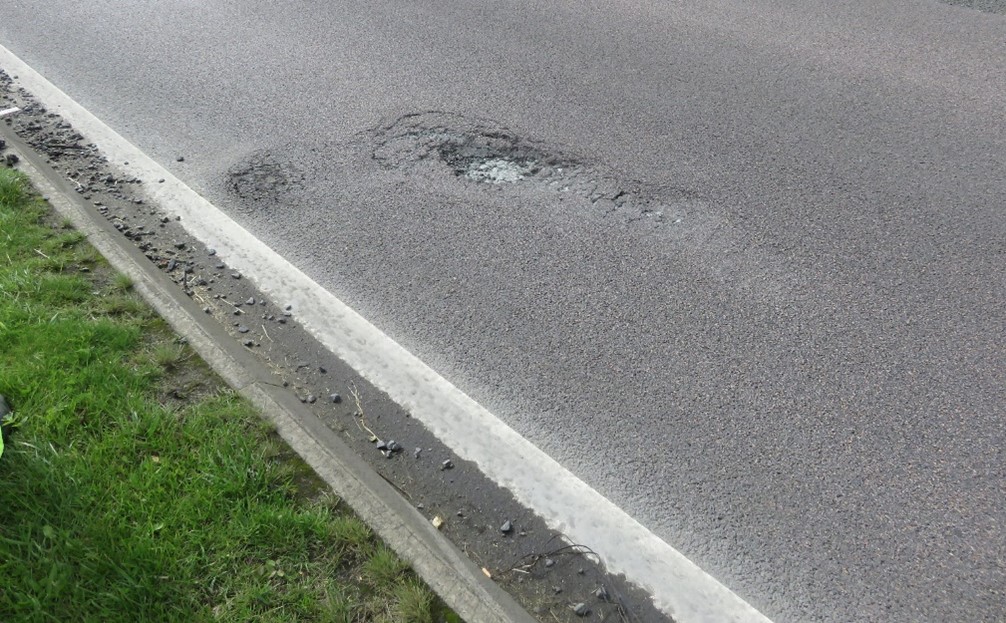Introduction
Context
As part of the Scottish Inspection Panel survey in 2019, it was reported that several pothole defects were observed on recently completed surfacing schemes (Figure 1-1). These types of defects are not normally associated with new surfacing and it was recommended that further investigations should be undertaken to investigate whether a problem exists and what measures could be put in place to eliminate any future occurrences.

Around the same time these observations were made, one maintenance scheme in the SW of Scotland started to show localised failures within weeks of being treated. The defects were unexpected and unforeseen, and the pavement had to be partially rebuilt soon after construction. Importantly, no issues or risks were identified at the design stage and the subsequent modes of failure were not anticipated.
Historically, early life pavement defects, such as potholes, are associated with material that is near the end of its service life. Anecdotal evidence suggests that defects associated with new surfacing can be isolated and confined to the surface course, but in some cases the failure can be traced to the bond or breakdown of the material that lies directly below the surface course.
Study objectives
The study objectives were to:
- establish the scale of the problem by examining defect reports prepared by Operating Companies (OCs) on behalf of Transport Scotland;
- determine the incidence and type of early life defects;
- identify any mechanisms or trends that lead to early life defects and material failure; and
- provide guidance to raise awareness of factors that could potentially contribute to early life material failure.
Scope
As part of the Scottish Road Research Board research and development work, WSP was commissioned by Transport Scotland to investigate the occurrence of early life pavement defects. The study was split into two phases:
- Phase 1 – Assessing the scale of the problem
- Phase II – Detailed investigation and guidance
The first phase involved collecting Information on early life defects from a range of sources, including Transport Scotland’s pavement management system and discussions with Operating Company (OC) representatives. The study covered the trunk road network, which is maintained by the OCs.
The objective of Phase I was to establish the scale of the problem and identify a list of schemes for further examination.
Phase II examined the identified schemes more closely to identify any common causes or trends. Based on the findings, recommendations were made to mitigate the occurrence of early life pavement failures.